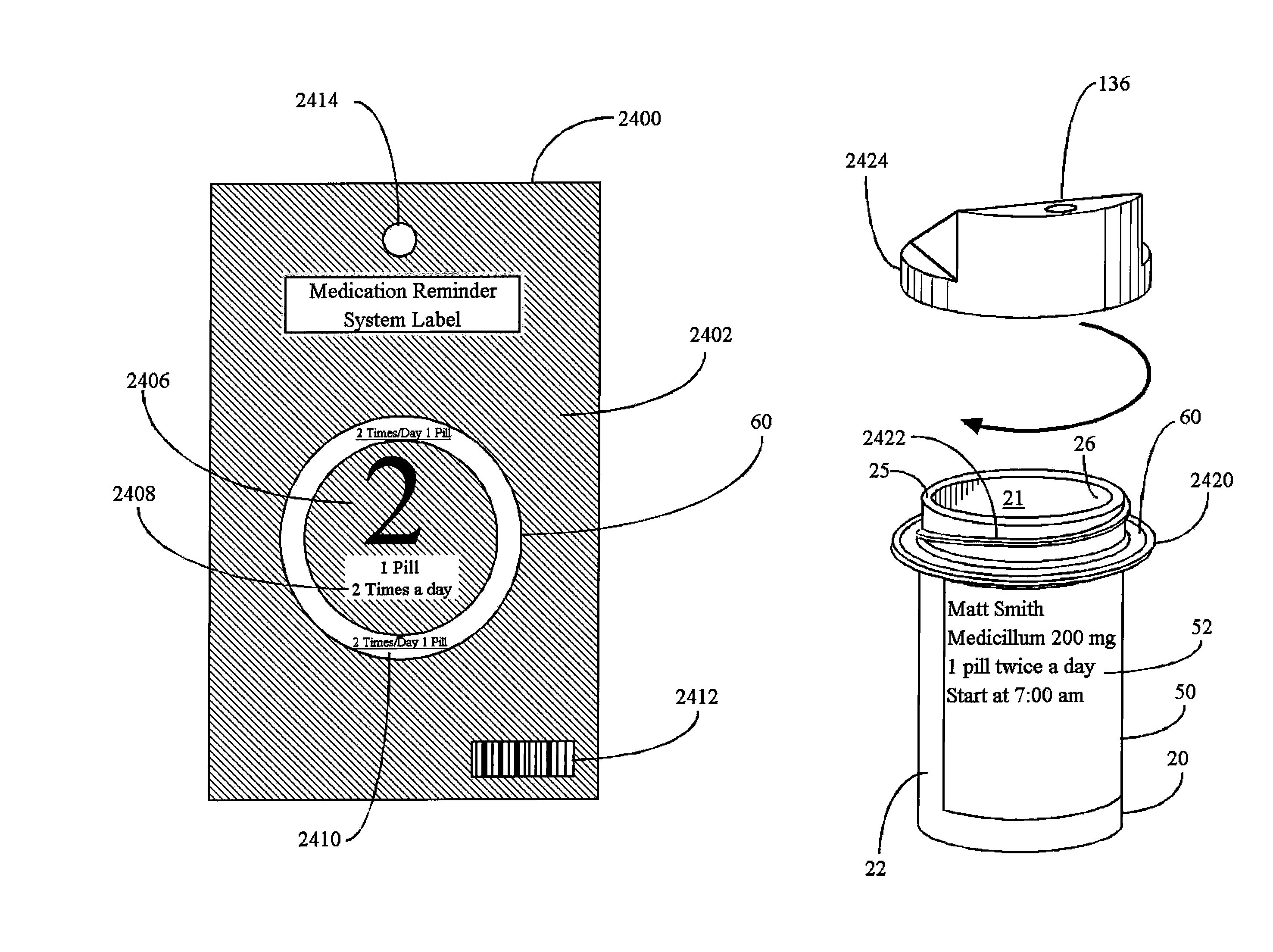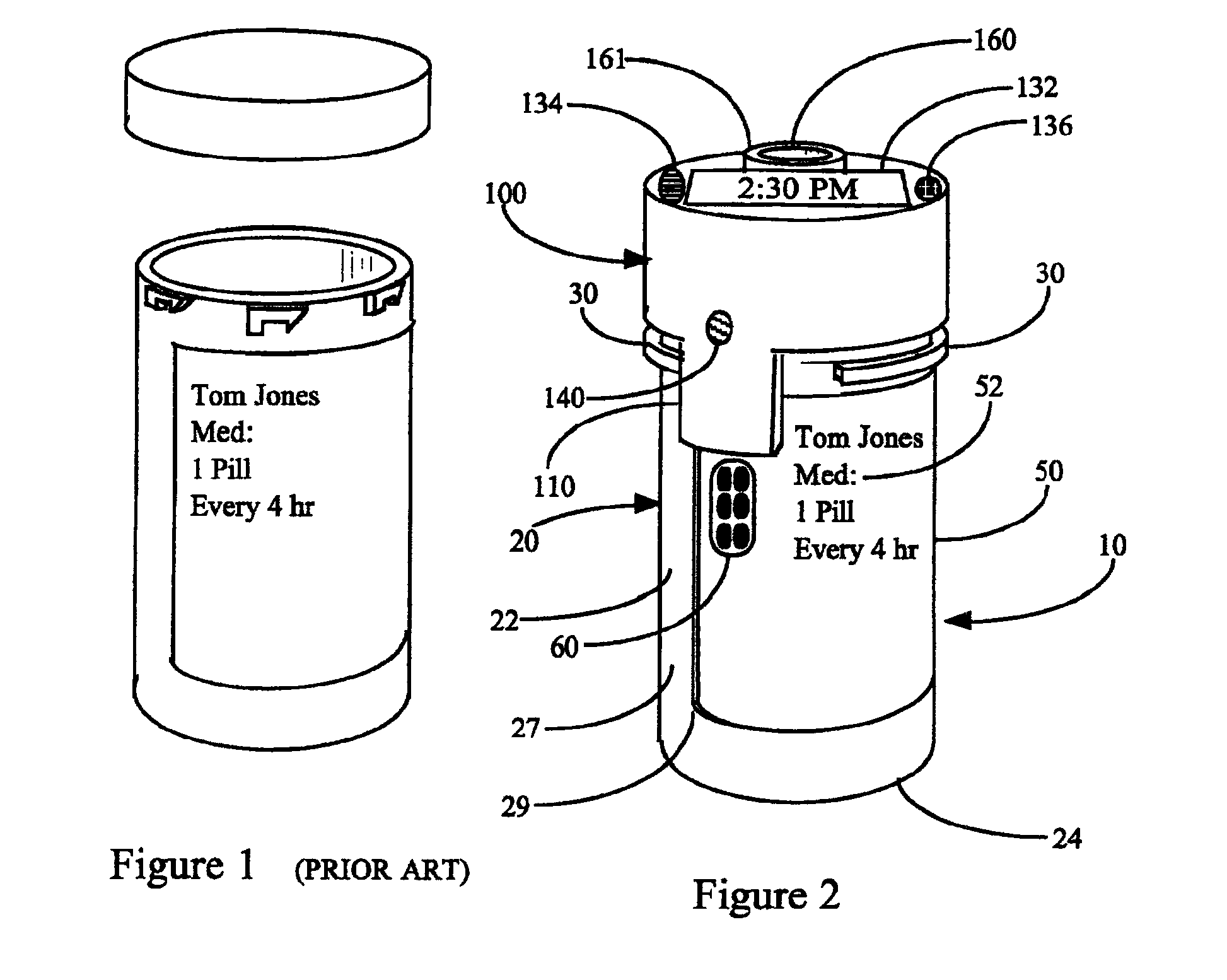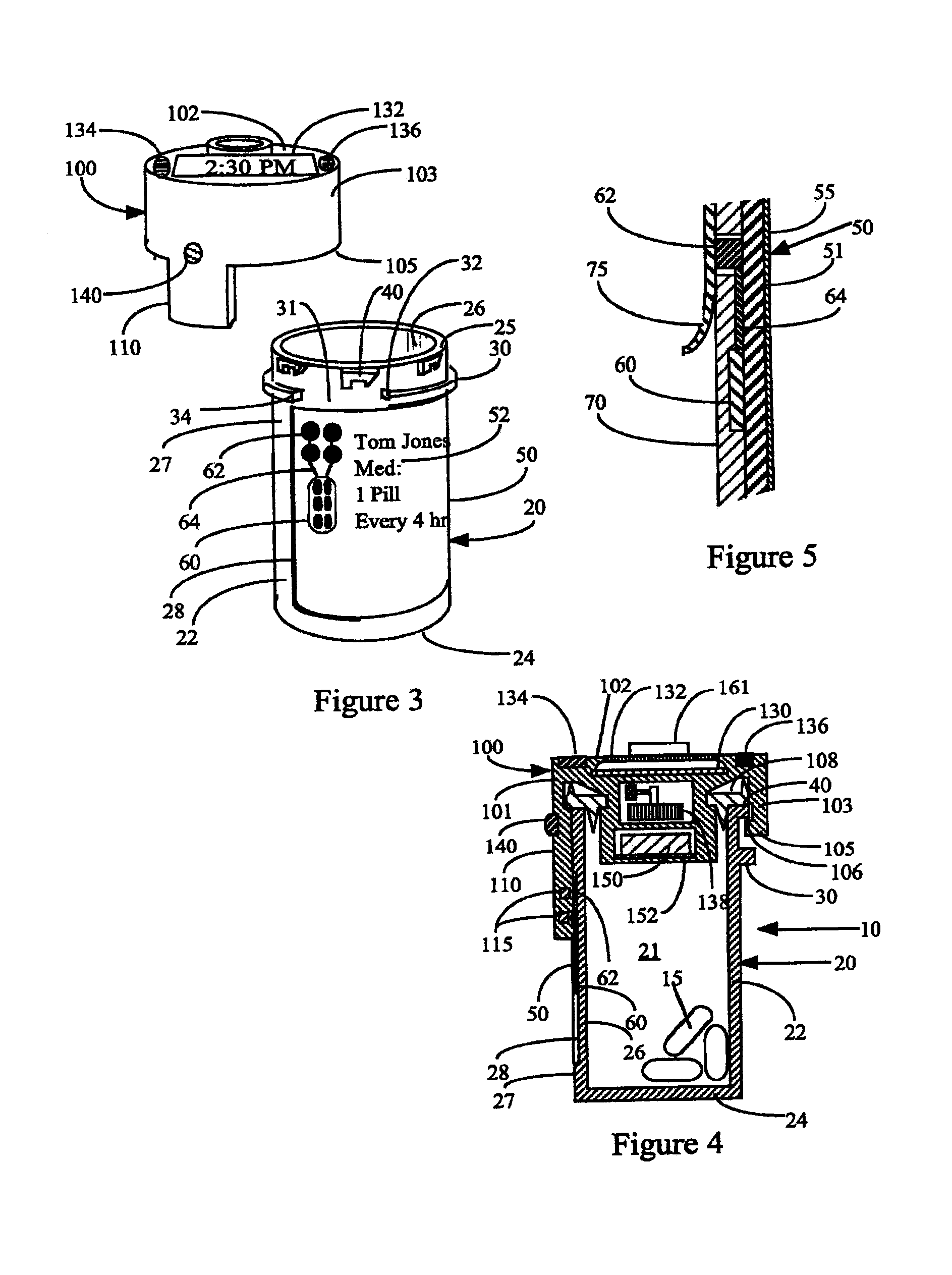Interactive medication container labeling
a technology for interactive medication and container labeling, which is applied in the direction of instruments, packaging foodstuffs, packaged goods, etc., can solve the problems of difficult to achieve, complicated dosing regimens that require patients, and particularly confusing, so as to avoid a prolonged hospital stay, improve patient compliance, and reduce the cost of treating the individual
- Summary
- Abstract
- Description
- Claims
- Application Information
AI Technical Summary
Benefits of technology
Problems solved by technology
Method used
Image
Examples
first embodiment
Operation of First Embodiment
[0286]When the automated cap 100 is secured to the medication vial 20, the control system 114 is complete. The sensors 115 on the tab 110 of the cap are in electrical contact with the contacts 62 of the memory strip 60, and the information 80 in the memory strip is in electrical communication with or can otherwise be read by the processor 120 in the cap. Predetermined portions of information 80 from the memory strip 60 are compared with the information that had previously been read and stored in the memory 125 of the cap 100. If the predetermined information 80 is the same as before, the processor 120 will compute the next prescribed time for taking a dosage of medication 15 and activate an alarm or otherwise communicate that information to the patient when that time occurs. If the cap 100 is not returned to seal the vial 20 to which it was previously attached, the computer 120 will activate the audible alarm 134. The patient or caregiver can disable or ...
second embodiment
[0292]FIGS. 12-15 show a second embodiment of the invention where the container 200 includes a conventional, childproof cap 260 as shown in FIG. 1, in place of the automated cap 100. The vial and interactive label that are interchangeable with the vial 20 and label 50 of the first embodiment. The interactive label 50 is electrically linked to the separate personal or business computer 270 via a sensing element 280. The conventional cap 260 is secured to the vial 20 via securement ratchets 40 as in the first embodiment. The guide ring 30 is located a predetermined distance from the top end 25 of the vial 20 so that the ring does not interfere with securing the conventional cap 260 to the vial 20.
[0293]The information 80 contained in the memory strip 60 is electronically conveyed to computer 270 by sensing element 280. Sensing element 280 has sensors 281 located on its inside surface in a pattern and position similar to the contacts 62 of the memory strip 60. The sensing element 280 h...
third embodiment
[0294]FIGS. 16 and 17 show a third embodiment of the invention where the container 300 includes a modified interactive label 350 and an automated cap 370 with a modified sensing tab 372. Cap 370 is otherwise interchangeable with cap 100. The container 300 includes a vial that is interchangeable with the vial 20 in the first embodiment. The label 350 includes two rows of conductive or non-conductive contacts 352 and 354. These contacts 352 and 354 can also take the form of reflective or non-reflective surfaces. These contacts or surfaces 352 and 354 represent 1 s and 0 s. The contacts or surfaces 352 and 354 combine to form a code representing the prescription regimen.
[0295]The inside surface of downwardly projecting sensing tab 372 includes sensors 374 that detect the presence or absence of a conductive or reflective surface 352. When the surfaces are conductive, one of the conductive surfaces 352 acts as a ground surface 356 for the remaining surfaces 352. By detecting a voltage or...
PUM
 Login to View More
Login to View More Abstract
Description
Claims
Application Information
 Login to View More
Login to View More - R&D
- Intellectual Property
- Life Sciences
- Materials
- Tech Scout
- Unparalleled Data Quality
- Higher Quality Content
- 60% Fewer Hallucinations
Browse by: Latest US Patents, China's latest patents, Technical Efficacy Thesaurus, Application Domain, Technology Topic, Popular Technical Reports.
© 2025 PatSnap. All rights reserved.Legal|Privacy policy|Modern Slavery Act Transparency Statement|Sitemap|About US| Contact US: help@patsnap.com



